We crossed from Hungary into Romania at the Nădlac border crossing (Hungarian Highway M43/Romanian Highway A1) and had read that this crossing is often crazy busy. It was definitely chaotic, but we succeeded in correctly picking one of the “All Passports” lines even though we couldn’t fully see the signage, and reached the border checkpoint after a little over an hour in line. The officer on the Hungarian side took our passports (along with all the paperwork for the car), stamped our passports with an exit stamp (which was critical to prove we had left the Schengen Zone), and then passed our paperwork to the Romanian officer sitting directly behind him in the same booth (it looked like they were separated by a small partition). We drove ahead about four feet and were given back our documents; we were in Romania.
Romania is not a wealthy country. A report from 2018 stated that 23.5% of the resident population was living in, or at risk of, poverty. Access to quality education is limited (especially in rural areas) and a significant number of Romanian students are considered functionally illiterate. Infrastructure is seriously lacking which was evident in their highway system – which, frankly, is dreadful. Most of the highways we travelled were single-lane roads passing through small villages and towns. The people, however, are friendly and quick to lend assistance when it was clear we were out of our depth – like trying to decipher parking rules.
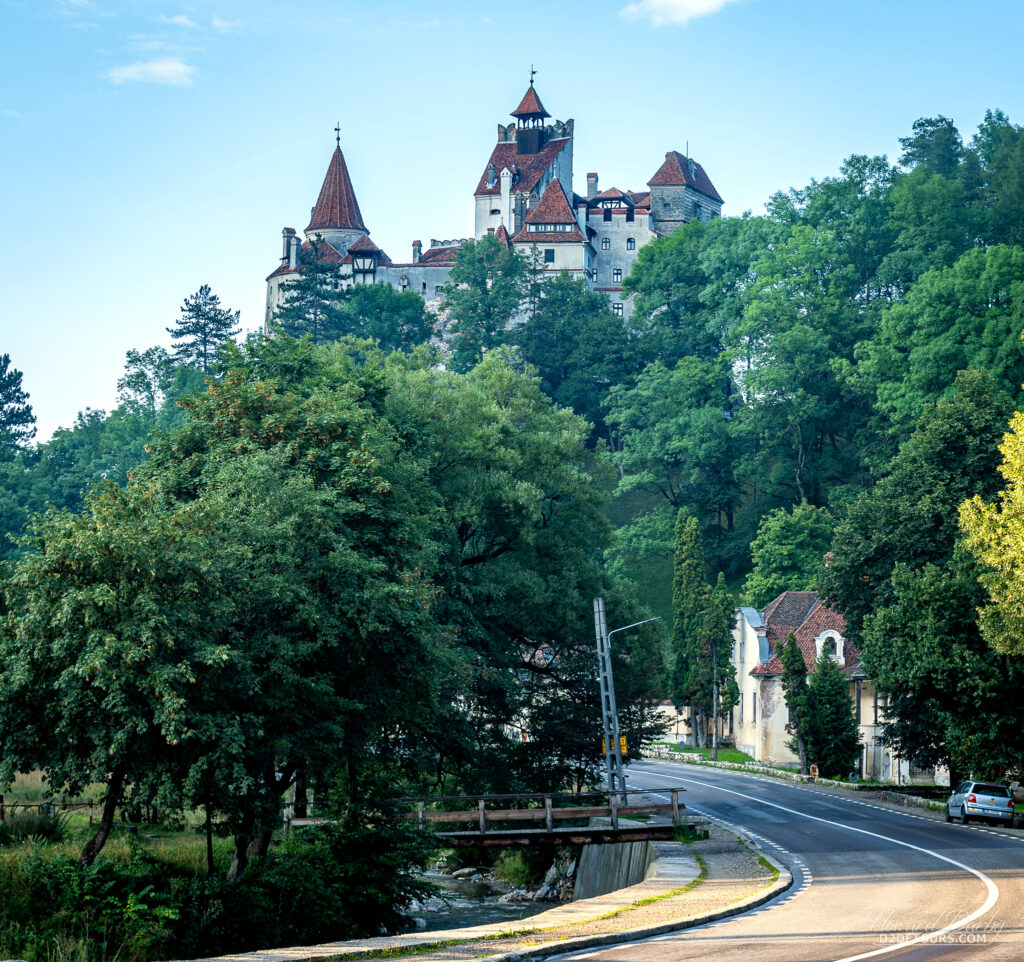

Situated in central Romanian, the Transylvania region is surrounded by the Carpathian Mountains to the south and east and the Apuseni Mountains to the west, and is some of the most scenic countryside through which we’ve driven. The flatland highways were flanked by corn fields ready for harvest (Romania is the 9th largest corn producer in the world) and bucolic villages seemingly frozen in time – it was not unusual to pass horse drawn carts on the highway. The mountainous highways wind their way through old growth forests, alpine meadows, and rocky outcrops with an occasional mountain sheep sighting.
The earliest reference to the region is found in a Hungarian document from 1075 which refers to the “terra ultrasilvanaI” – the “land beyond the forest.” Various empires have controlled the region: Dacian, Romans, Goths, Huns, Gepids, Avar Khaganate, Slavs, Bulgarians and by the 11th century the Hungarian Kingdom laid claim to the region. Various Hungarian iterations held the region until 1920 when it became part of the Kingdom of Romania. In 1940, Northern Transylvania had once again been claimed by Hungary but following the end of WWII, Romania regained control. From 1947 to 1989, Transylvania, along with the rest of Romania, was known as the Socialist Republic of Romania, under communist rule.
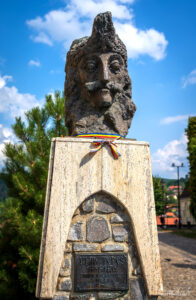
I suspect most of us associate Transylvania with vampires, which I’m not sure sits well with every local inhabitant. It certainly is a boon for the tourist industry and is milked for all its worth!. Some people believe Bram Stoker wove pieces of Romanian folklore (like the troubled spirits known as Strigoi, who were believed to rise from their graves, transform into animals at will and gained strength from their victim’s blood) with the historical figure of Vlad III (aka Vlad the Impaler who was reputedly known for his cruelty) when he wrote his 1897 novel Dracula. In reality, Vlad III was the son of a respected medieval knight who was a member of the Order of the Dragon (Dracul) and as the son of the Dragon, Vlad III was known as Vlad Dracula. Vlad Dracula was born around 1429 în Sighișoara, Transylvania but his notoriety comes from his tenure as the Voivode (governor) of Wallachia, the region south of Transylvania on the other side of the Carpathian Mountains. Wallachia was a vassal state of the Ottoman Empire. As such it was obligated to pay annual tribute to the Ottomans in the form of young men for military operations and monetary taxes on agricultural or animal products or provide those physical commodities themselves. Additional taxes were levelled on Wallachia as a non-muslim vassal state. In a nutshell, Vlad III refused to pay the tribute provoking the ire of Sultan Mehmed II. Mehmed dispatched several emissaries in an effort to bring Vlad to heel, all of whom were captured and impaled. Finally, Mehmed gathered an army of more than 200,000 and marched on Wallachia. Vastly outnumbered, Vlad turned to scorched earth tactics, poisoning wells and destroying food sources along Mehmed’s path through Wallachia enroute to the capital Târgoviște, near Bucharest. At Târgoviște Mehmed found the city deserted save for a field of impaled enemy soldiers and local sympathizers, which some accounts number at 20,000 men, women and children. Historical accounts vary on whether Mehmed was horrified or impressed with this ghastly sight, in any event he left Wallachia and Vlad earned his epithet.
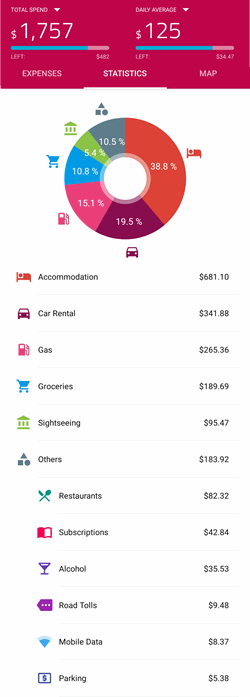
Dollars – We averaged about $125/day Canadian ($97 USD / €98) over 14 nights (seven nights in Sebeș and seven nights in Râșnov), which works out to approximately $3,750 per month CAD ($2,890 USD / €2,900). Accommodation, our car lease, and gas accounted for almost three-quarters of our expenses.
Environment – The City of Sebeș is at the crossroads of Romania’s two main highways: the A1 East/West motorway and the A10 North/South motorway making it a perfect base for day-trips in the area. We stayed in a very spacious ground floor apartment with a nicely equipped kitchen and a dishwasher – always a nice bonus. It did have a small supermarket within walking distance but because we had a car, we opted to get our groceries in the larger City of Alba Iulia.
Beginning in the 12th century, the Kings of Hungary invited German Saxons to settle in Transylvania. In exchange for free land, the Saxons agreed to protect the region against the ever present threat of Ottoman and Tatar (nomadic tribes living in northeastern Mongolia) invasions. The town of Râșnov was ideally situated for us to visit some of the fortified churches and fortresses built by the Transylvanian Saxons. The massive Râșnov fortress perched 650 ft above the town was unfortunately closed for restoration (a recurring theme during our travels this year). Our Airbnb in Râșnov was again in a residential section of town with a supermarket close by, and an easy 20 minute drive from the historic Town of Brașov.
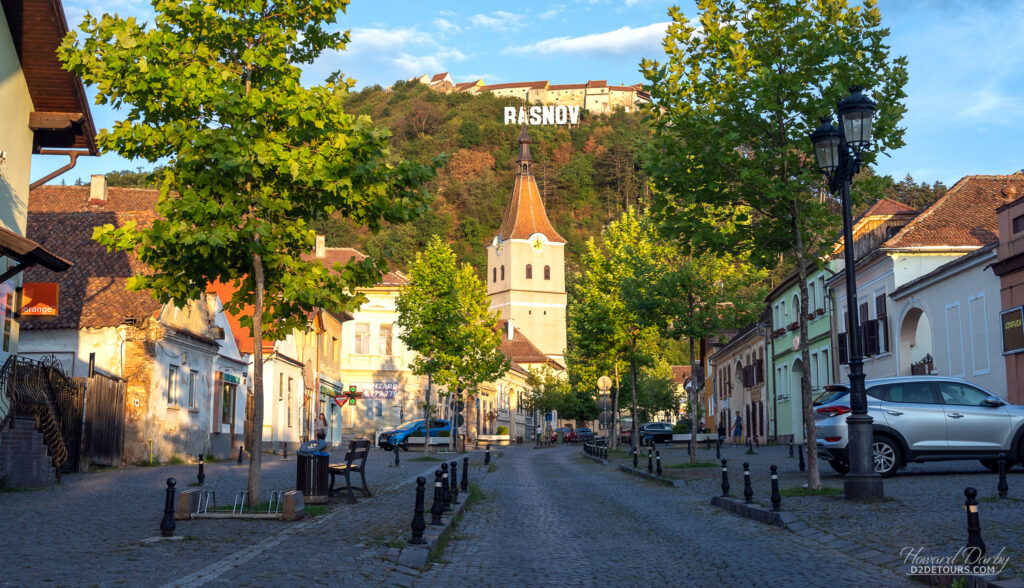
Tips, Tricks & Transportation – A few pointers when driving your own vehicle in Romania:
- A motorway stamp is mandatory and can easily be purchased online as an e-vignette.
- Roundabouts are EVERYWHERE – if you aren’t familiar with how to traverse these, do a bit of googling.
- We “think” you get a discount on gas if you pay with cash. The exact percentage of savings was indeterminable but we were generally saving $5.00 CAD on a full tank of gas when we didn’t use a credit card.
- It is illegal to drive a dirty car in Romanian, with the definition of “dirty” being within the discretion of the constabulary.
Staying in the “burbs” we were buying groceries in brick and mortar stores rather than local outdoor markets. If you use Google Maps to find stores near you, the term hypermarket will show you stores akin to Walmart Supercentres (we really liked the Kaufland stores) versus supermarket which will map mid-sized food retailers like Penny stores. The Carrefour chain of stores has both hypermarkets and supermarkets but we thought they were a bit pricier than Kaufland or Penny. Using grocery store as your search term on Google Maps will locate small, neighbourhood markets. Everywhere we shopped had a good selection of foodstuffs, meats and produce – especially the cherry tomatoes, we’ve been eating those like candy!
Out and About
Sebeș (Sebesh) – We used Sebeș as our base to explore the next three locations.
Salina Turda – Just over an hour north of Sebeș is the strangest mash-up of history and glitz. In 1075, a Hungarian chancellor made mention of a fortress in Turda that was defending salt resources, but it isn’t until 1271 that a salt mine was specifically referenced and mining activity continued in Turda until 1932 when the operation was closed.The visitor’s center at the mine claims that the remaining salt from the Turda Salt Mine could “cover the salt requirement for the entire Planet for 60 years, if it were necessary.” In 2008, a regional/local infrastructure program (worth €6M) modernized the mine and it opened for tourism in January, 2010.
Today the mine is a futuristic amusement park where you’ll find a small ferris wheel, putting greens, table tennis and an underground lake complete with row boats alongside snippets of historical data on the mine’s operations. It needs to be seen to be believed and was worth the 50 RON/pp ($14 CAD) entrance fee – it is a bit more expensive on weekends, and likely busier too. It’s a bit chilly down there too, so bring a light jacket.
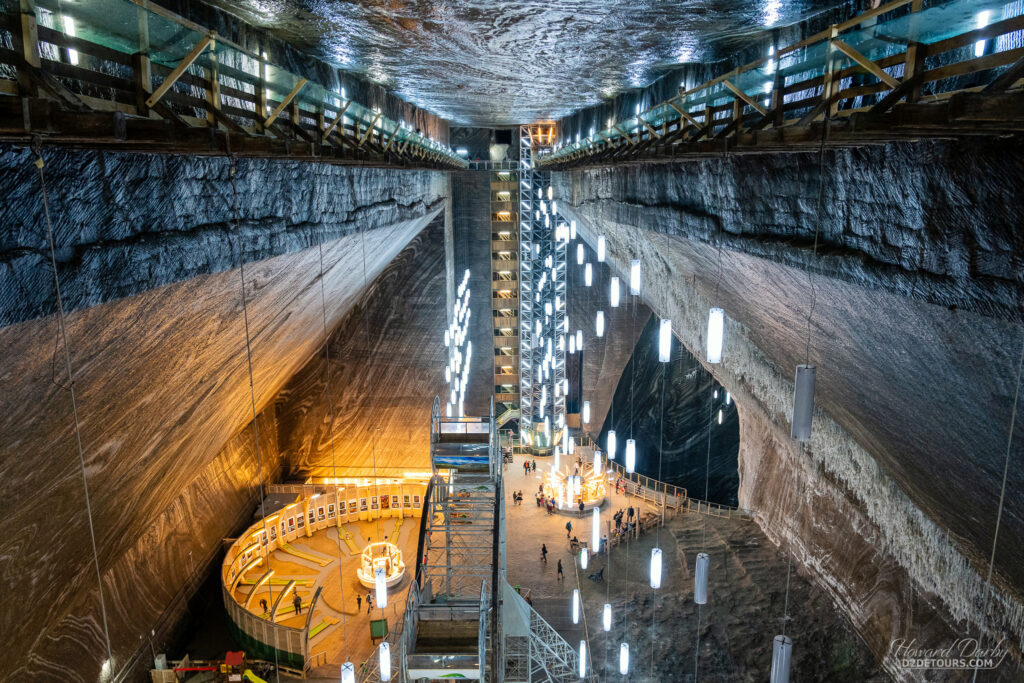
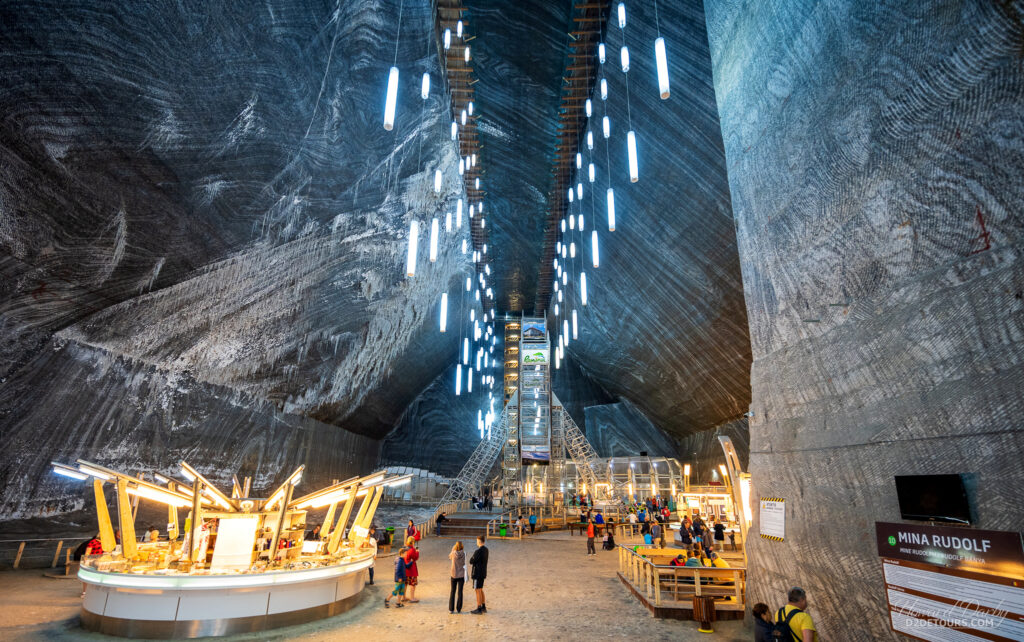
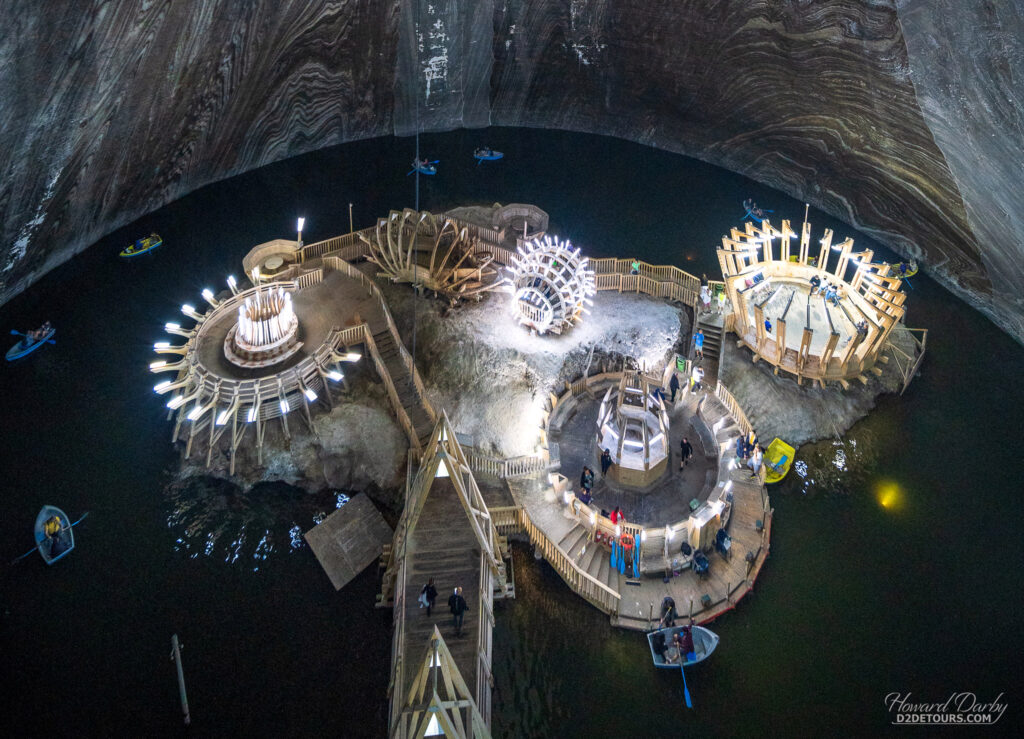
Castelul Corvinilor – An hour slightly southwest of Sebeș is Corvin Castle (aka Hunyadi Castle or Hunedoara Castle), construction of which began in approximately the 15th century and has been under renovation and restoration ever since. It is a magnificent structure.

The Neboisa (“don’t be afraid” in Serbo-Croatian) defensive tower is one of the few structures that remains relatively unchanged from its original form. The exterior of the Buzdugan (a type of mace) defensive tower was decorated with geometric motifs still visible today, resulting in its current nomenclature – the Painted Tower.
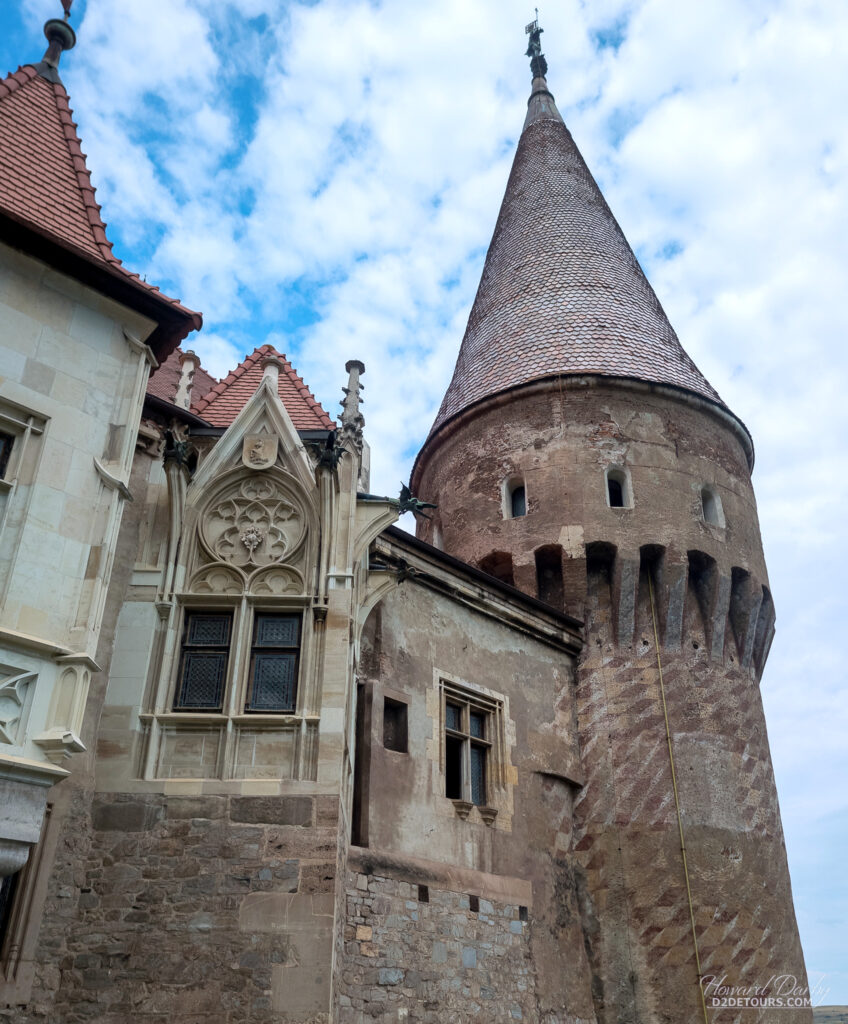
In a wonderful example of when fiction becomes fact, in the courtyard leading to the Painted Tower there is a 30m deep (98 ft) well dug during the early stages of the castle’s construction. According to the legend, three Turkish prisoners were tasked with digging the well and were promised their freedom upon completion. When the work was finished, 15 years later, their captors reneged on the deal and in retaliation the prisoners inscribed “you have water, but not soul” on the wall of the well. Modern linguists have translated the inscription to say “he who wrote this inscription is Hasan.” The entrance fee to the Castle is only 30 RON/pp ($8 CAN / $6 US) – a real bargain.
Sarmizegetusa Regia – From Corvin Castle we drove about an hour east to the archaeological site of Sarmizegetusa Regia (don’t confuse these ruins with those of Sarmizegetusa in Arsenal Park, which are Roman ruins from a later date). Dating from around 82 BCE until the Roman conquest in 106 CE, Sarmizegetusa Regia was a military and religious center and the capital city of the Dacian Kingdom. The actual site is roughly a 1km uphill walk from the parking lot with an entrance fee of 30 RON/pp ($8 CAN / $6 US) and they don’t take credit cards. We only had 20 RON in our pockets and thankfully (after that 1k walk) the ticket agent kindly let us in at the student rate of 5 RON/pp! This ranks up there among my favourite ruins. Nestled in the dense Carpathian forest, and under an overcast sky, it felt very mysterious and ancient – the sign to watch out for snakes added to the eerie feeling!
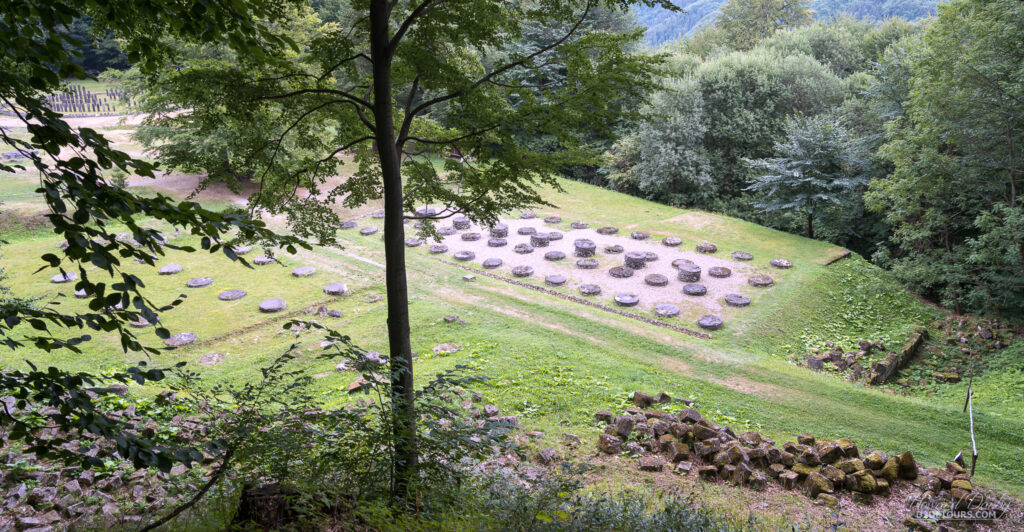
There isn’t much left of the actual fortress, but a portion of the old road leading from the fortress to the temples still remains as do some very interesting bits of the temples themselves, including what at first glance appears to be another stonehenge. In reality, they are replicas of the wooden roof supports which have disintegrated over time.
After seven nights in Sebeș we headed east toward Râșnov with a few stops along the way (the drive from Sebeș to Râșnov without stopping is about 3 hours).
Sibiu – Nicknamed “The City with Eyes,” for the eyebrow dormers which feature on many of the old houses, Sibiu was one of the towns settled by the Saxons invited by the King of Hungary in the 12th century. Admittedly, we did not spend very much time here, just taking a quick walk around the old town, but I can see the appeal of spending a few days here soaking up the ambience.
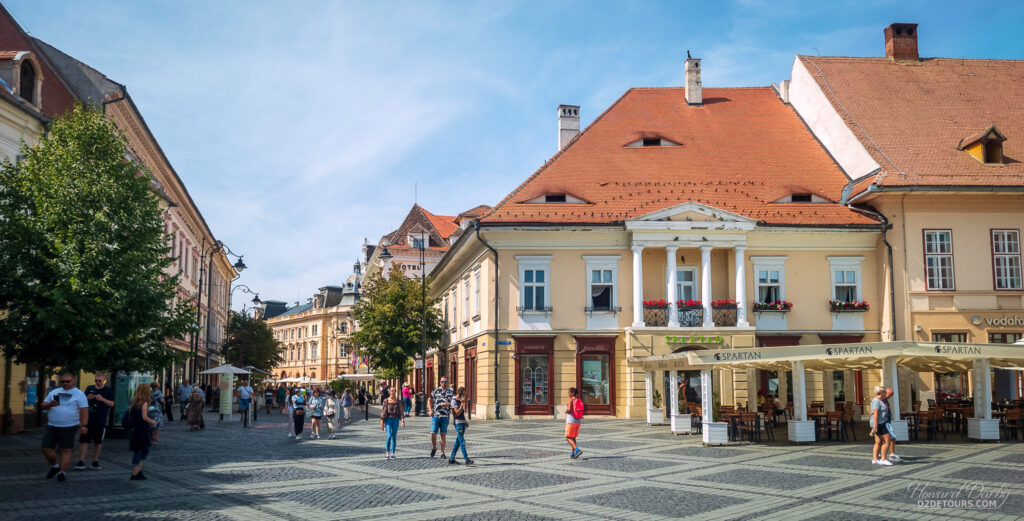
Cârța – Often referred to as a fortified church, the ruins at Cârța are actually a 13th century Benedictine Monastery. Invading Tartars and Ottomans inflicted significant damage on the Monastery until it was fortified with protective walls in the 15th century. Today the community uses the remaining chancel and transept as an Evangelical Lutheran Church, presided over by a resident stork. There is a small entrance fee to the ruins – 10 RON/pp ($2.50 CAD).
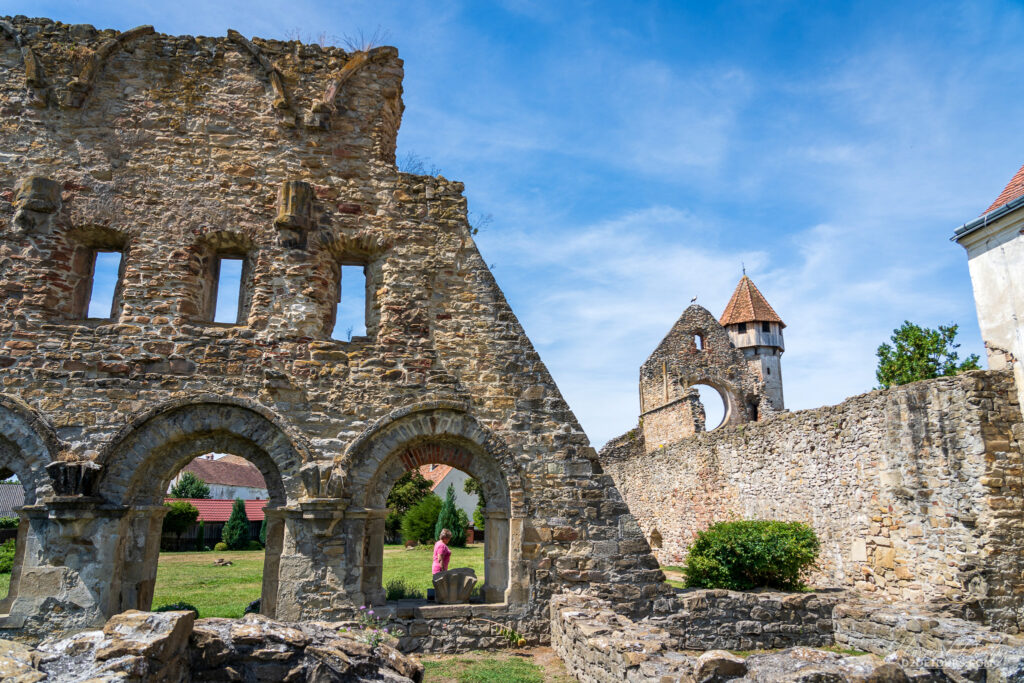
The Transfăgărășan – Not far from Cârța is one end of theTransfăgărășan road. Following the 1968 invasion of Czechoslovakia by the Soviet Union, Nicolae Ceaușescu (Romania’s communist leader from 1964-1989) wanted to ensure his military had a quick route over the Carpathian Mountains in the event Romania was faced with a Soviet invasion. Construction began in 1970, with the 150-kilometer road (93 miles) opening in September, 1974 (although additional paving continued until 1980). I’m not sure how quickly troops would be able to travel on this alpine road with its steep hairpin turns, long S-curves and sharp descents. It is fully open only from June to October and is a popular tourist destination – popular might be an understatement. We were there mid-week and the last section before you reached a parking lot at the top crawled with bumper to bumper traffic. We had no hope of finding a spot to park so managed to turn around and headed back down – the scenery is spectacular though!

Râșnov (Rashnov) – We spent seven nights in Râșnov, but the main attraction of the area is the City of Brașov (Brashov) and the fortified Saxon settlements in the surrounding countryside. Oh, yeah, and Bran Castle. The connection between Bram Stoker’s Dracula and Bran Castle is tenuous at best but it has glommed onto the story and we really weren’t interested in a kitschy vampire tourist trap though we did pop down early one evening to admire the exterior of the castle.

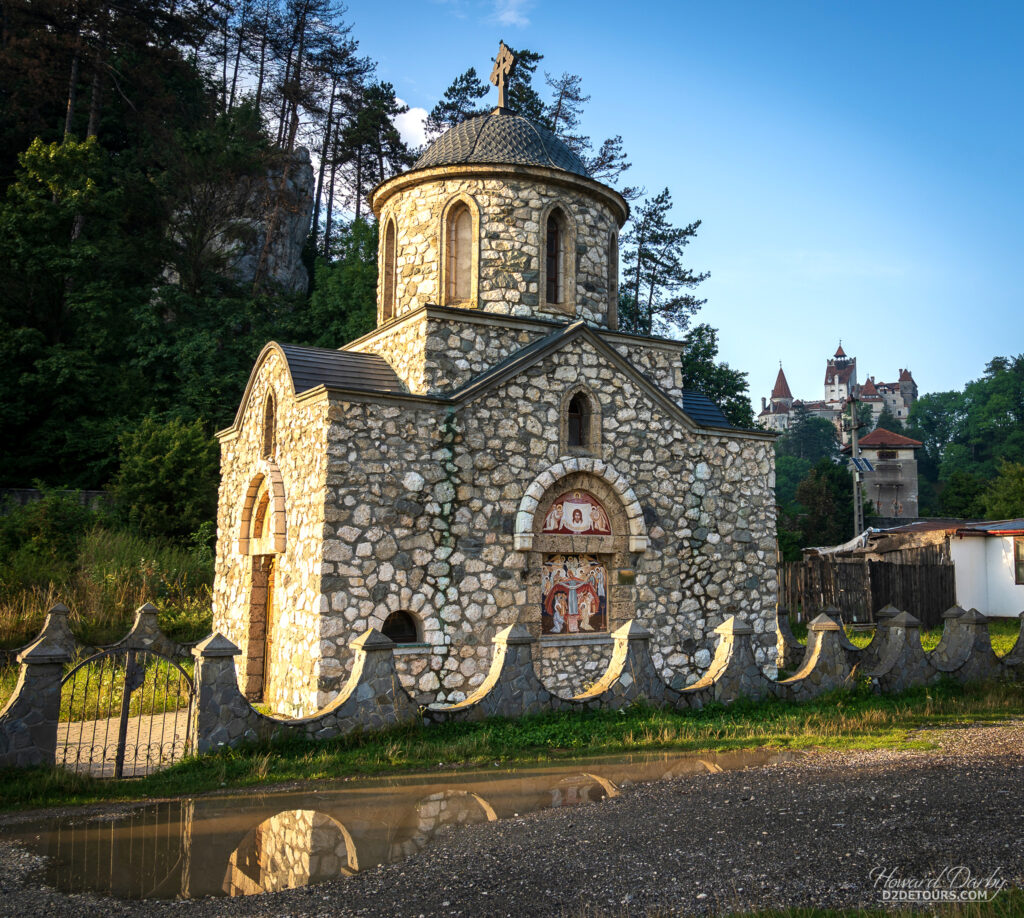
Brașov – We joined an excellent Free Walking Tour in Brașov. Walking tours are a wonderful way to hit all of the highlights of a city or town and always have neat little tidbits you wouldn’t necessarily get otherwise. The tour started in the Council Square (Piata Sfatului), next to the fountain. Historically this square was the market square and the hub of the City. During the Soviet era, it was turned into a parking lot to reduce the risk of public gatherings which could lead to, gasp, revolution; now it is once again a lively area full of shops and restaurants.
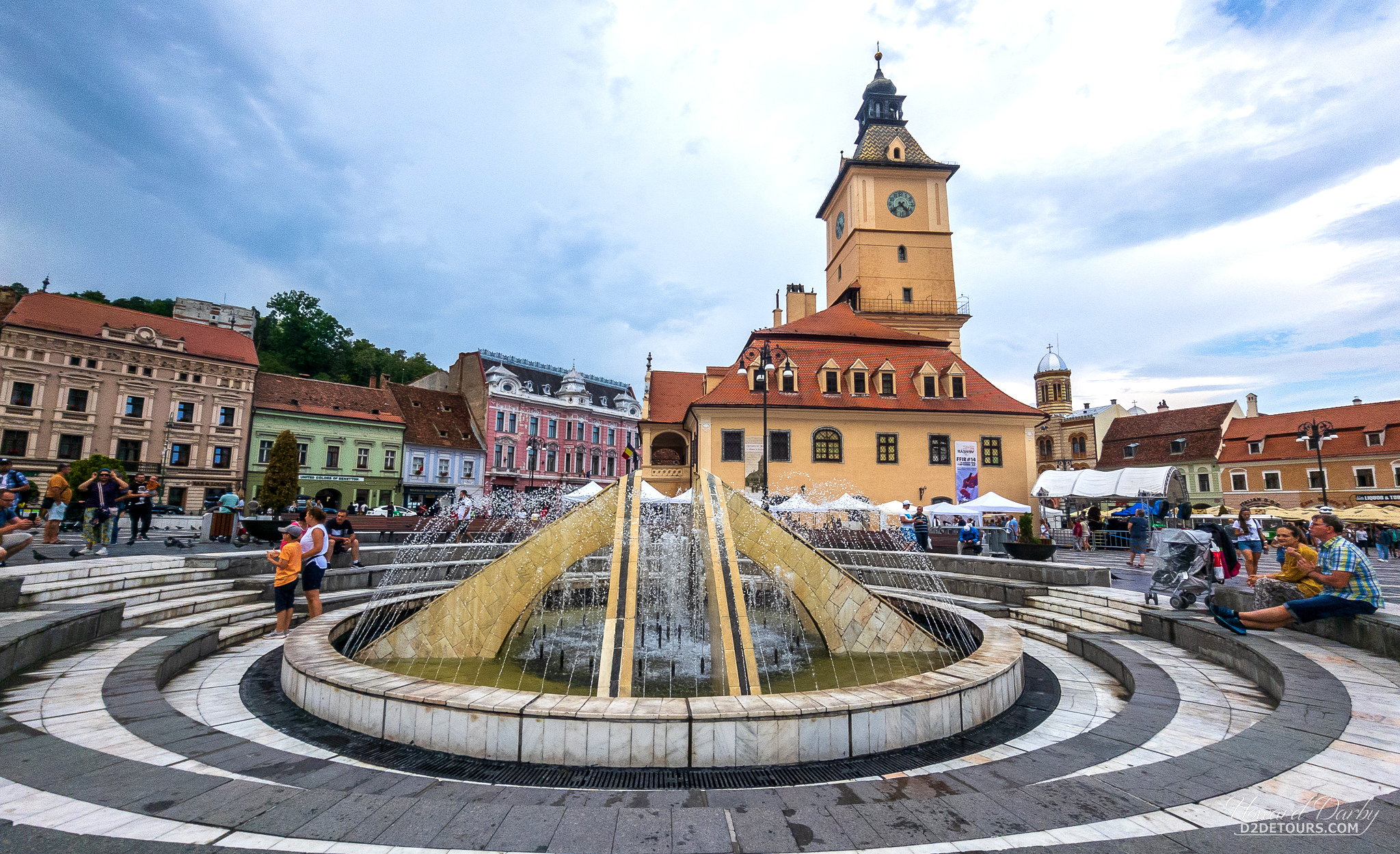
Just off the main square is the Biserica Neagra (the Black Church). Brașov was one of many cities in Transylvania settled by the Saxons and they were responsible for constructing this new cathedral on the remains of the smaller Catholic Church of St. Mary. Work began in 1383 but it took nearly 100 years before the work was completed as construction was frequently halted when the Saxon workers were called away to defend the area against marauding Ottomans and Tartars. Originally intended to continue as a Catholic church, most of the Transylvanian Saxons had converted to Lutheranism during the Protestant Reformation of the 16th century and transformed the church into an Evangelical parish in 1542. It is known as the Black Church because of the soot and damage resulting from a massive fire in 1689 (the damage has since been repaired).
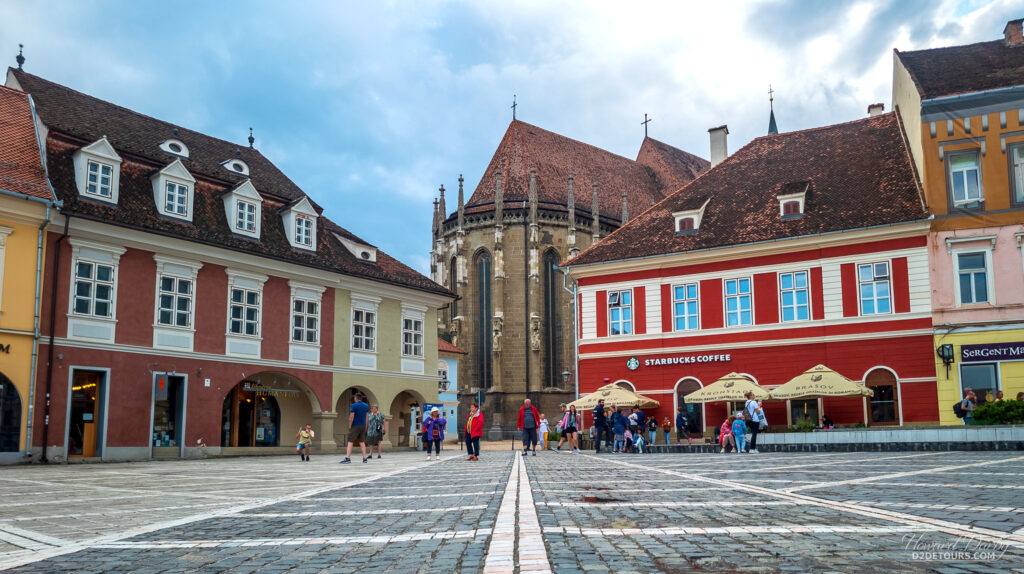

Not far from the Black Church is the Strada Sforii (Rope Street), a narrow street between the houses that was likely built following the 1689 fire to provide firemen with quick access between streets. It is 80m in length (260ft) with a width that varies between 111 and 135 cm (44-53 inches). At one end of the Street is the Ropers’ Guild and a romantic local legend says that the head of the guild caught his daughter in flagrante delicto with an undesirable young man. The guildmaster took a length of rope and stretched it from one end of Rope Street to the other and told his daughter that if she could sell all of the rope in the market the next day, he would consent to the relationship. The next morning in the market, the young man bought all the rope.
When the Saxons arrived in Brașov they displaced the local Romanians (whom they called Șchei) forcing them to live outside the town walls (this neighbourhood is still called Șcheii Brașovului). The Șchei were forbidden from owning property inside the town walls, were forced to pay a toll to enter the town to sell their goods at market, and were only allowed within the walls during daylight hours. Poarta Ecaterinei (Catherine’s Gate) was one of the Gates leading in/out of town to the Șchei neighbourhood. It has four small corner turrets which symbolize the town’s judicial autonomy and the “right of sword” – essentially the use of capital punishment was within the town’s discretion and for Șchei found inside the walls after dark the punishment was death. One final interesting fact about the medieval town of Brașov, (and all fortified Saxon towns in Transylvania) is that the guilds within the Town were each responsible for building and maintaining a specific portion of the town’s fortifications – Catherine’s Gate was built by the Tailors’ Guild in 1559.
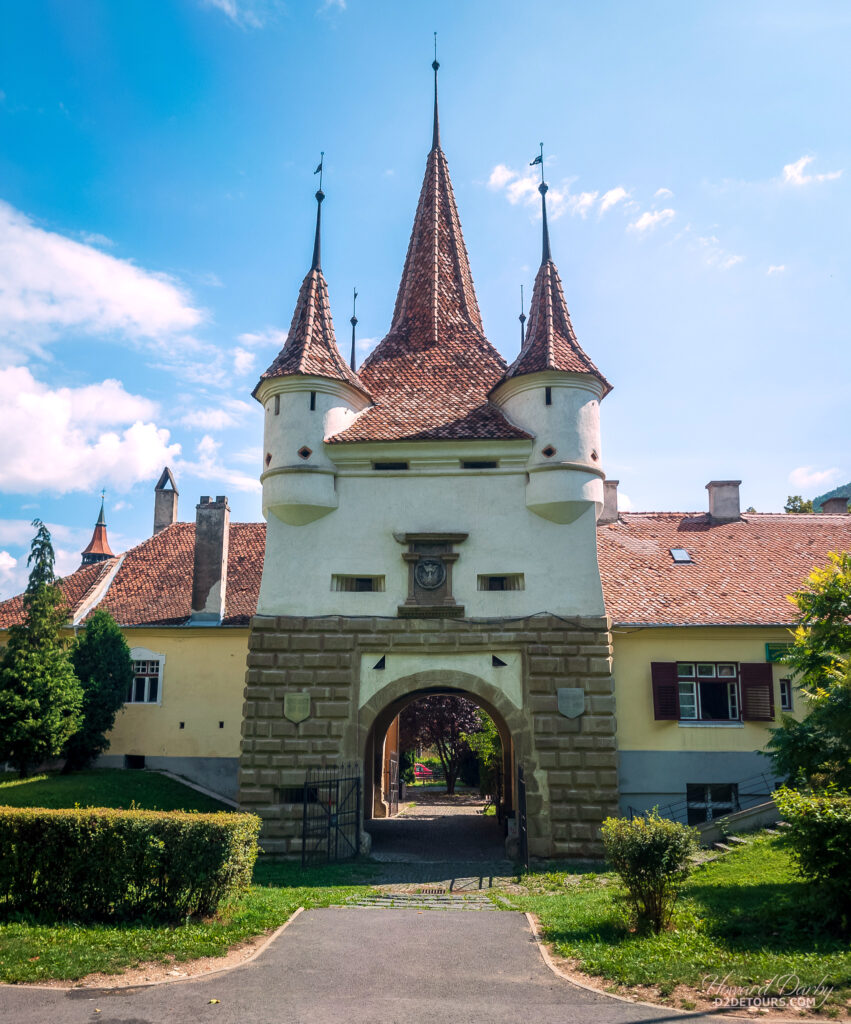
Rupea – Roughly an hour north of Brașov is the 14th century Saxon-built Cetatea Rupea (Rupea Citadel). Built on what Romanian archaeologists believe might have been the ruins of a Dacian defensive fort, the Rupea Citadel is considered to be a fliehburg, a defensive location not permanently occupied but rather a refuge for the local population when under threat. The citadel has only recently been reopened after a massive restoration project between 2010 and 2013. The entrance fee was only 15 RON/pp ($4 CAN).
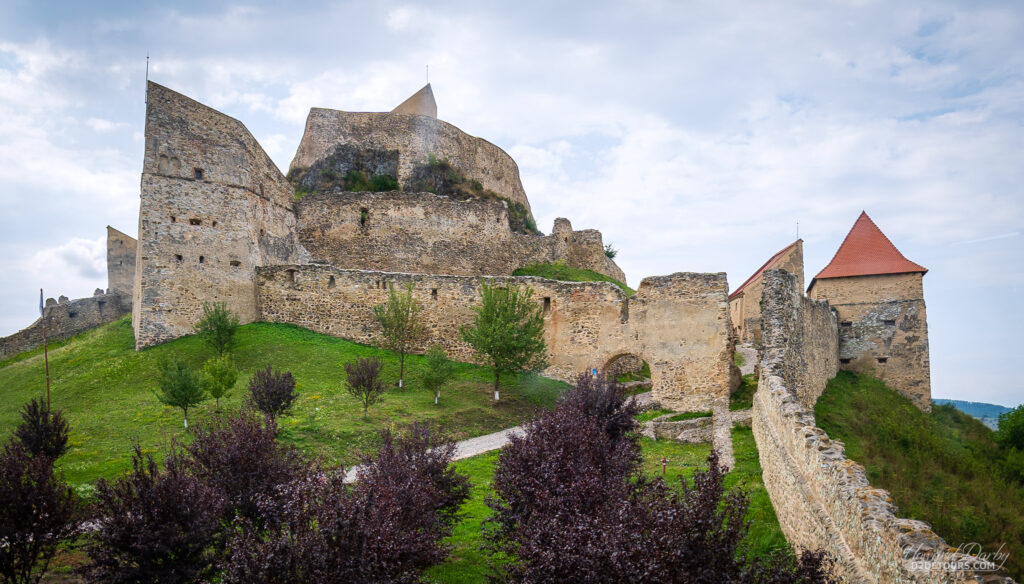
Viscri – Viscri is just a short 20 minute drive from Rupea. Viscri was, and still is, a tiny village. Documentation from the early 1500 lists 51 households, 3 shepherds, 1 teacher and 2 poor people. Today there are no more than 500 inhabitants of which only 27 still claim Saxon heritage. There are only a handful of streets, none of which are paved, and we met a flock of turkeys on the walking path from the parking lot to the “main street.” The fortified church here is beautifully preserved and the whole village feels like you’re stepping back to a “simpler” time.
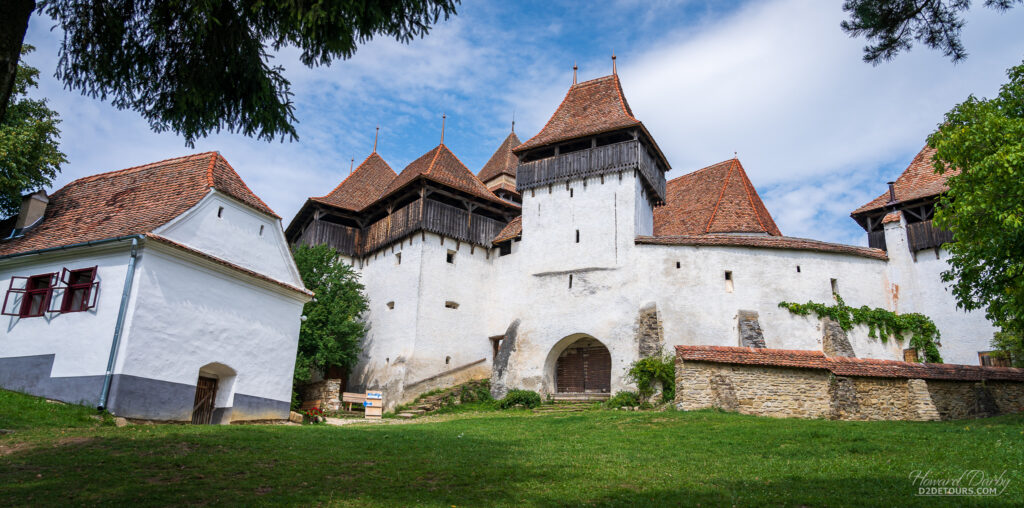
That feeling was reinforced when we read the sign inside the Lard Tower:
Until the early nineties, when villagers did not have refrigeration or freezers, each family would keep their lard and ham in the Lard Tower [within the fortified church] which could maintain a constant temperature throughout the year.
House numbers were marked on the skin of the lard or ham and every Sunday at a specified time the Tower was opened so that each villager could take a piece of their lard or ham home for the week. It was important that you estimated correctly the amount of food needed for the week because the Tower would not be opened again until the following Sunday!
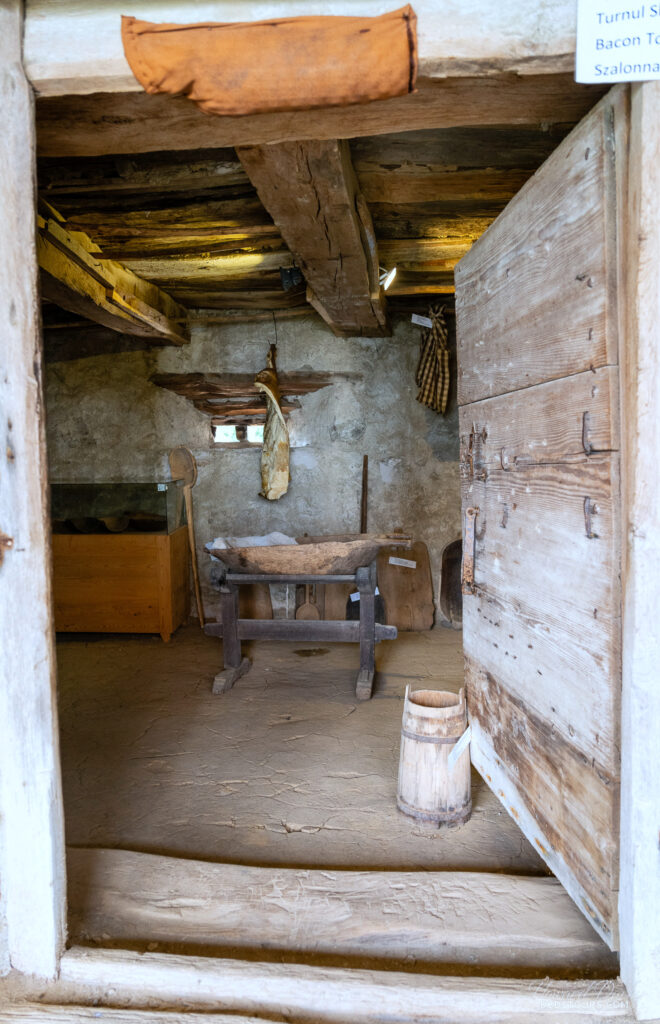
Prince Charles fell in love with this part of Romanian during a visit in the 90s and bought a house here in 1996, which put Viscri on the tourist map so there are now a few artisan shops and restaurants in the village. We enjoyed a hearty traditional Romanian lunch at “Solid Family’s 25.” There is no set menu, whatever the matriarch is cooking that day is what will be served; we were not disappointed.
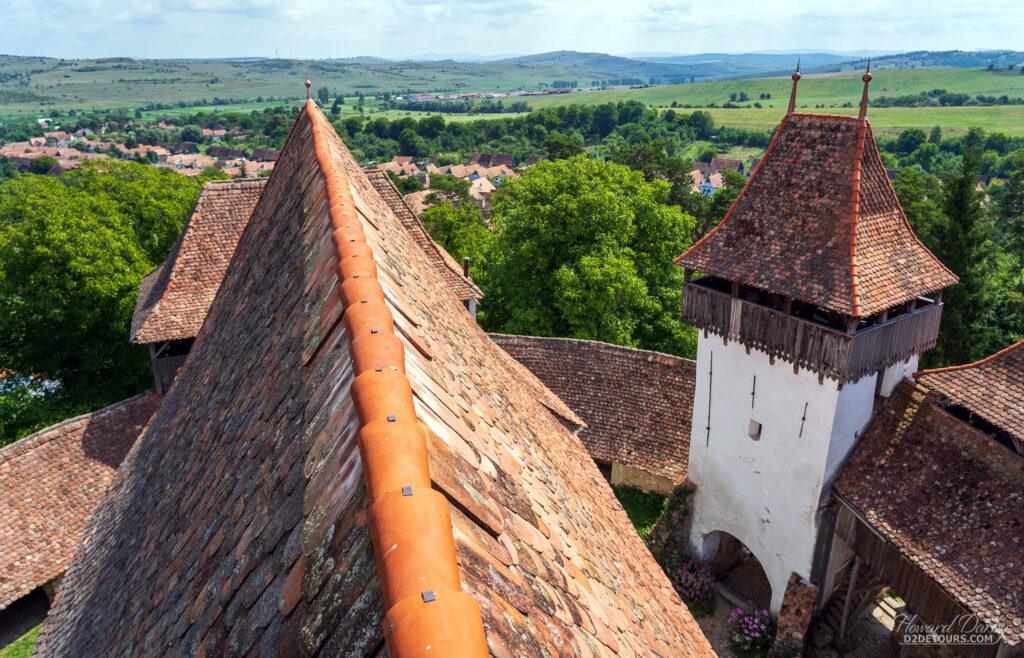
Sighișoara (Sigishoara) – The last stop on our tour of Saxon fortifications was Sighișoara (about 44 minutes from Viscri). Just like Brașov, the guilds within the town walls were responsible for parts of the fortifications and many of these towers, each with its own style, have been well-preserved. The highlight, in my opinion however, is the Clock Tower. As the main point of entry to the town this 64m tall (209ft) tower dominates the skyline.
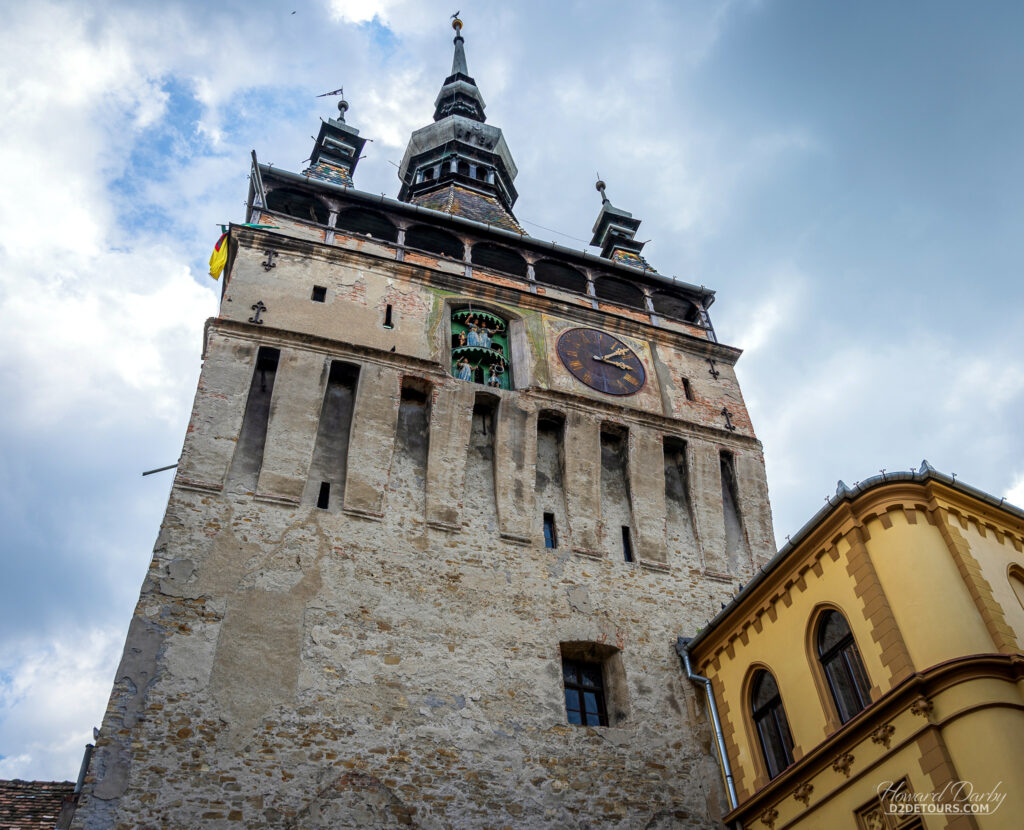
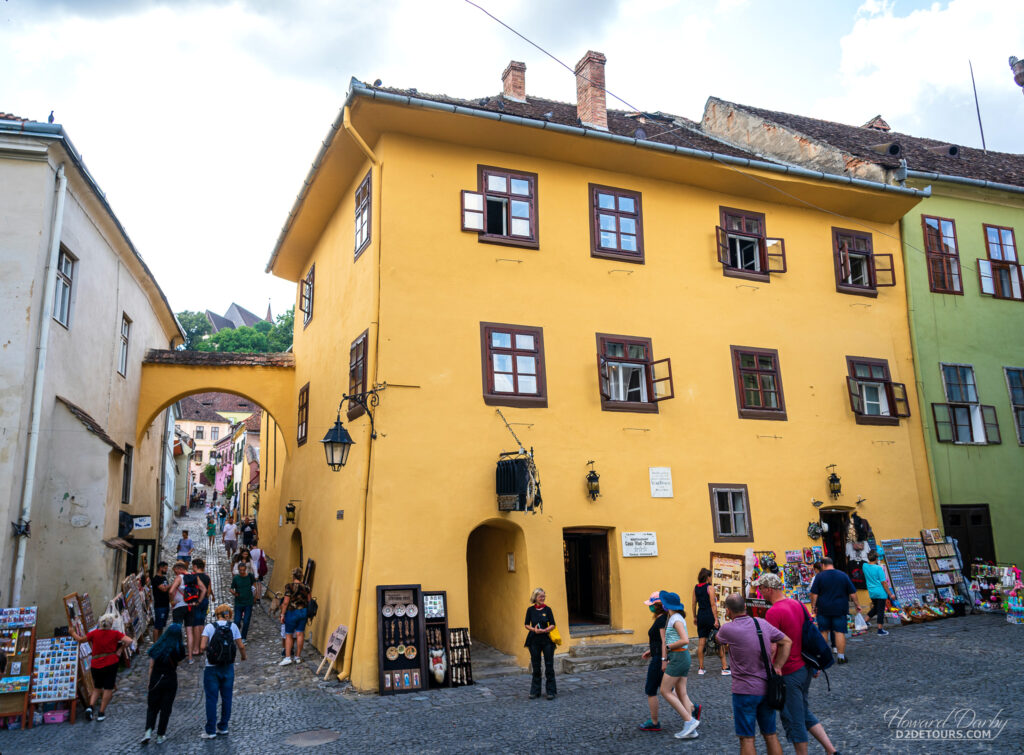
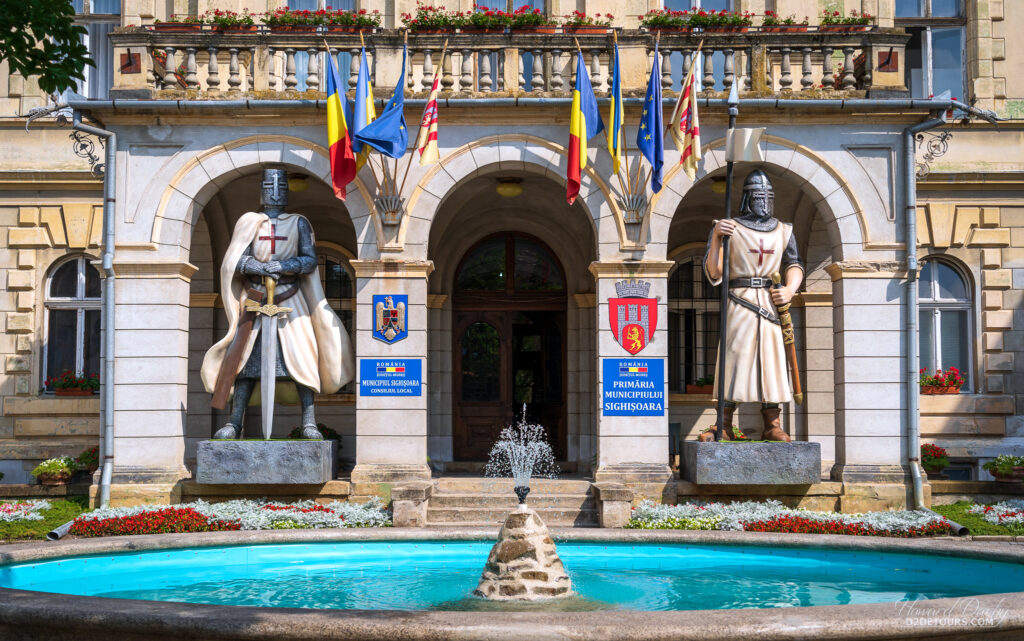
Us (our thoughts on the area) – We thought having a car throughout our stay in Transylvania was very advantageous, allowing us to get to some areas that aren’t easily reached by public transportation or tours. Renting a car (or hiring a private driver) would certainly be an option too, but we sure enjoyed having the flexibility of our own wheels. We used the Renault Eurodrive program that offers a very attractive long-term lease program for non-EU residents (check our Italy to Hungary post for a bit more detail). And as I’ve already said, the Transylvania landscape is beautiful to drive through. Off to Bucharest, Romania.
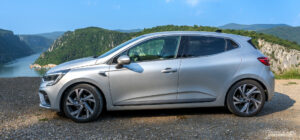

Restaurants – Polenta, known locally as mămăligă, is a staple of Romanian cuisine. Bulz, a ball of polenta stuffed with cheese that is either fried, grilled or baked and then served alongside meat and a fried egg (and is delicious!!), was traditionally considered peasant food though you will see it served in upscale restaurants nowadays. I also highly recommend the Romanian version of cabbage rolls – sour cabbage stuffed with pork or beef (or a combination of both) mixed with a bit of rice and served with a generous dollop of sour cream. If you have room for dessert try Papanași – basically an enormous deep-fried cheese donut, with a Timbit top (our Canadian readers know what that is), drenched in heavy cream and sour berry jam. Totally yummy but they are huge and generally two portions are served – without question a shareable dessert. If you’re in Brașov and enjoy gelato, you must stop at GelatoMania. Our walking tour guide said that they are by far the best in the city, and on weekends and warm evenings it’s not uncommon for them to have a lineup more than a block long. And if you want to enjoy some Romanian wine, the Fetească Neagră variety of grape makes an excellent red wine and even a cheap one ($19.90 RON / $5 CAD/bottle) was very drinkable.
Speech – Romanian is a unique language. It is a sub-branch of the Romance languages that evolved from Latin, but also contains Slavic, German, Greek and Turkish elements and has the distinction of being the only Romance language spoken in Eastern Europe. If you have some knowledge of Italian, Spanish, French or Portuguese, you’ll find you can understand a significant number of words. It is also a phonetic language, which simplifies pronunciation! And just an interesting observation, much of historical signage was in Romanian, German and Hungarian (with some English occasionally thrown in too).
English was spoken quite a bit in cities and towns, but less so out in the rural communities. These are the words/phrases we felt were most helpful to know:
- Buon Giorno (Bwohn-johr-noh) – Good Morning (although it seemed acceptable any time of day);
- Bună ziua (Boo-noh zi-ua) – Hello;
- La revedere (La re-ve-de-reh) – Goodbye;
- Te rog – Please;
- Mulțumesc (Mool-tzu-mesk) – Thank you;
- da/nu – yes/no;
- Nu înțeleg (Nu in-te-legh) – I don’t understand;
- Cât costă? (Cat kos-tah) – How much does it cost;
- Noroc! – Cheers (when drinking);
- Scuze – Sorry or Excuse me.

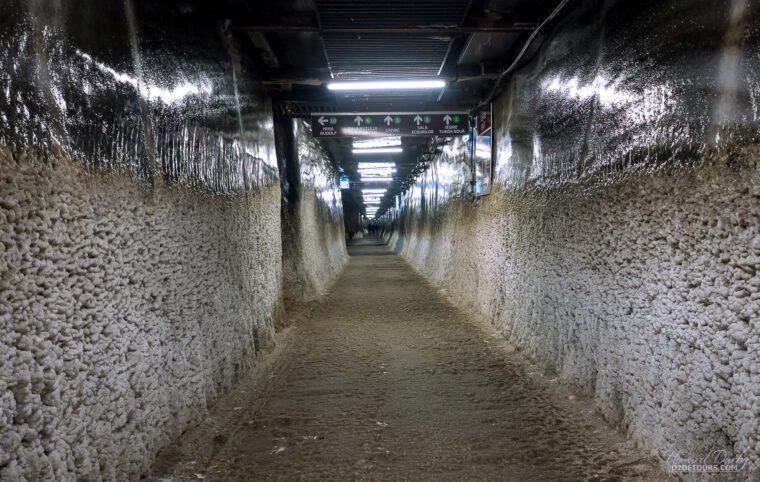
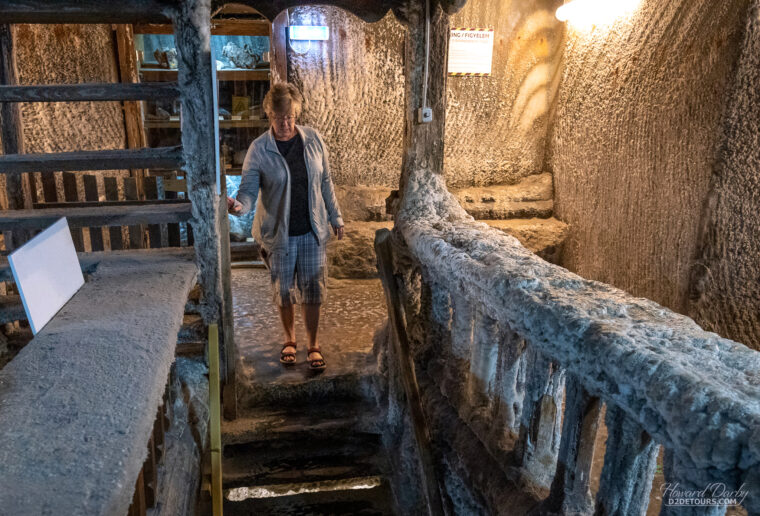

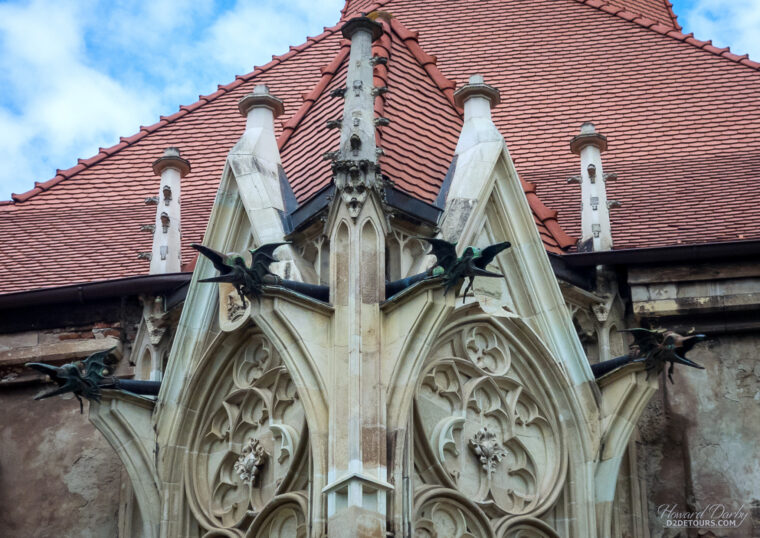
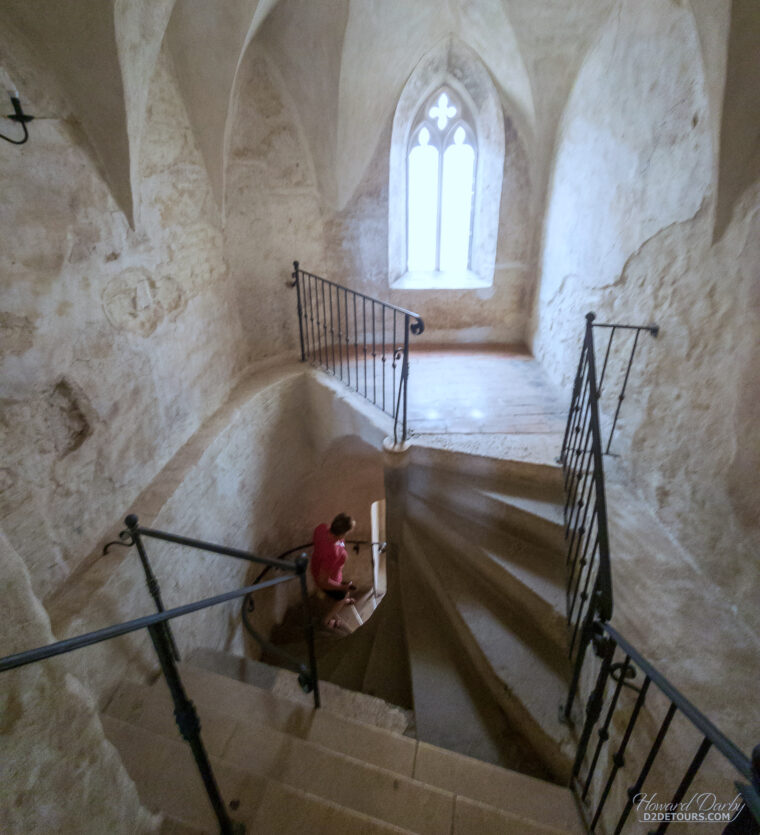
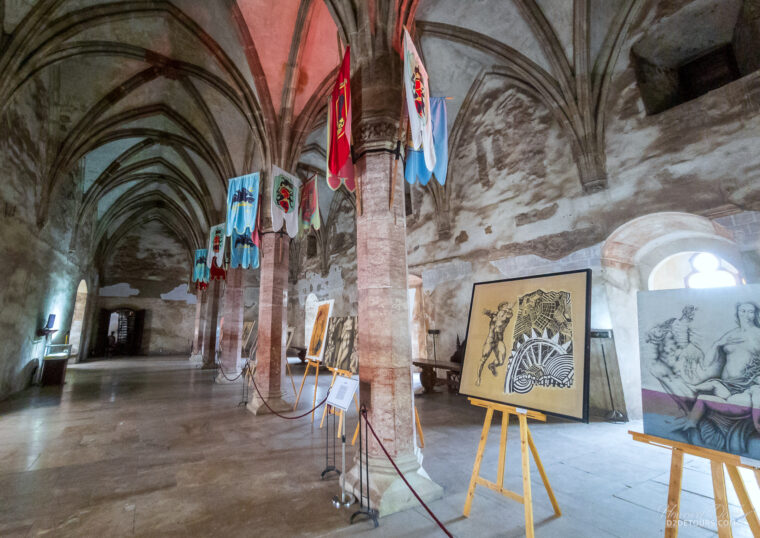
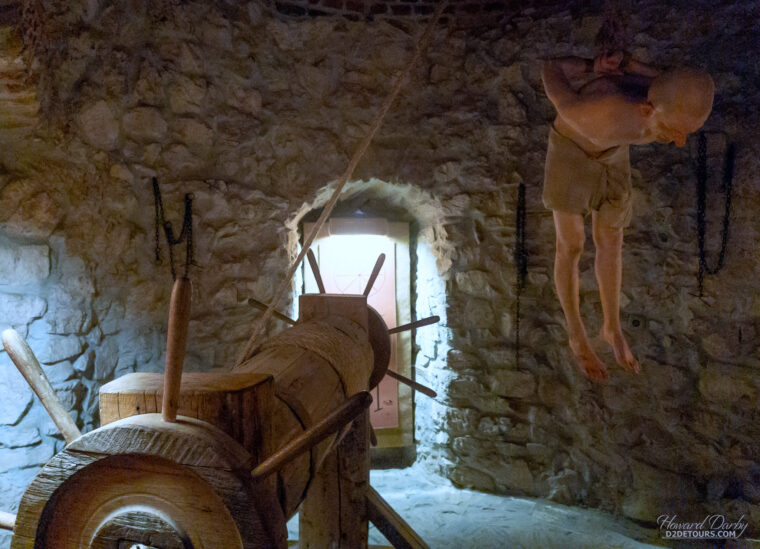
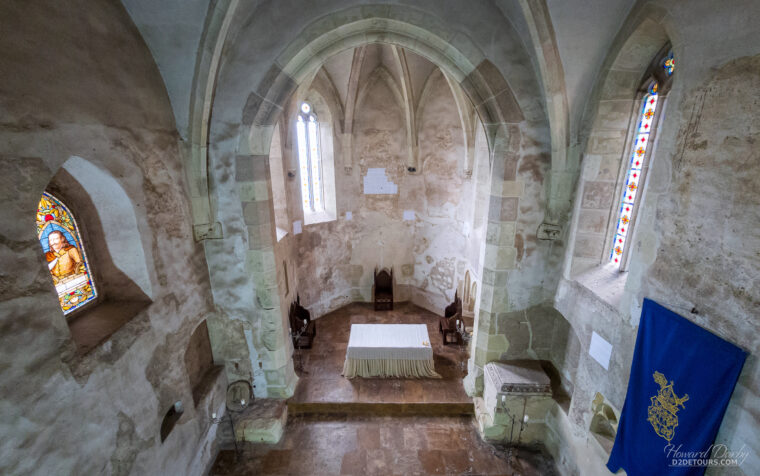
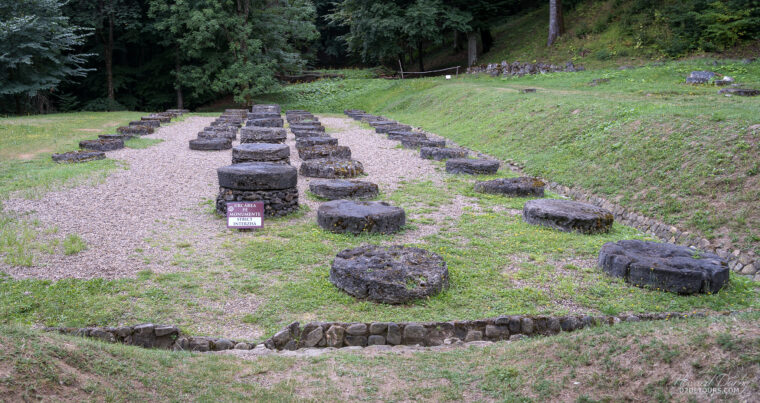

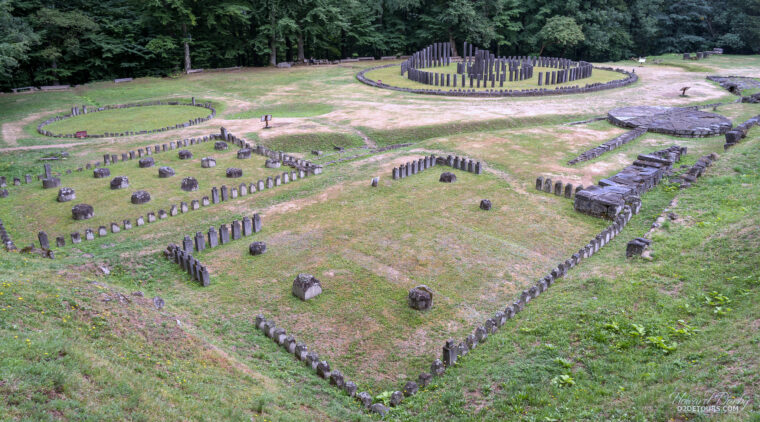
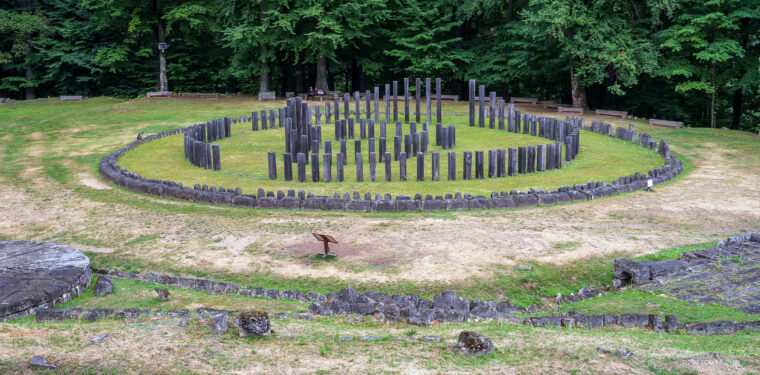
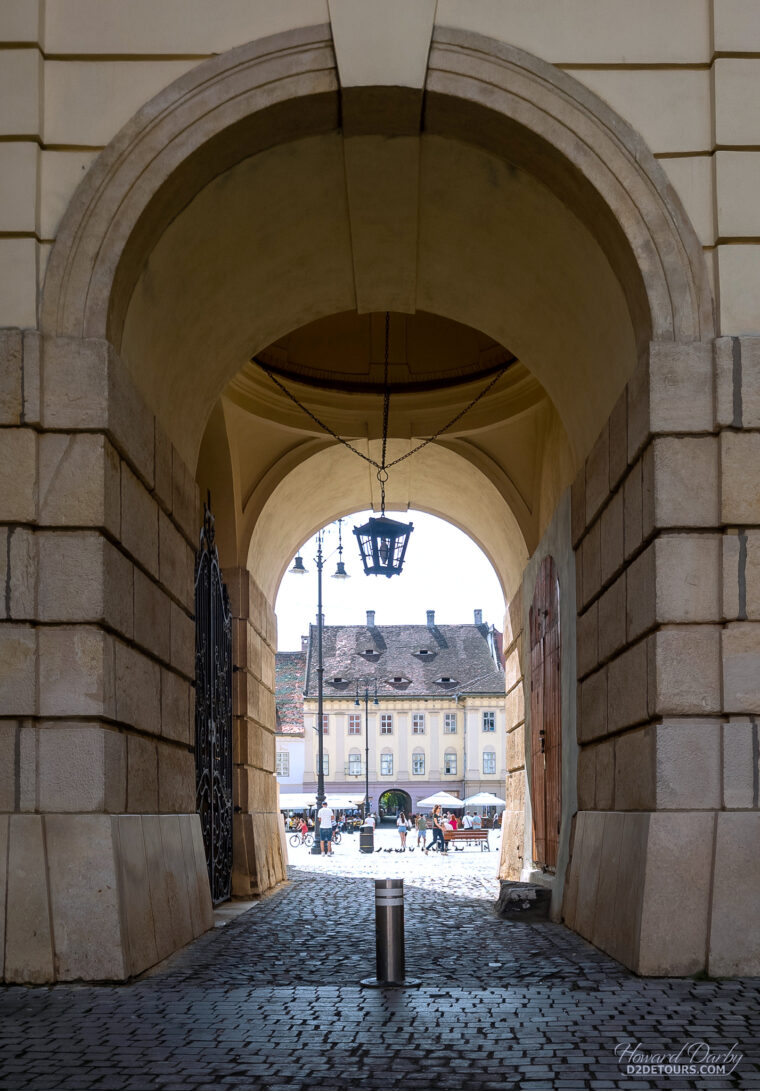
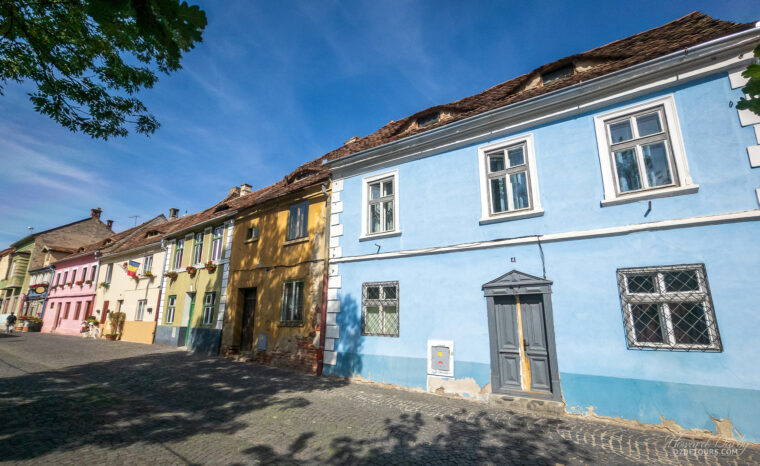
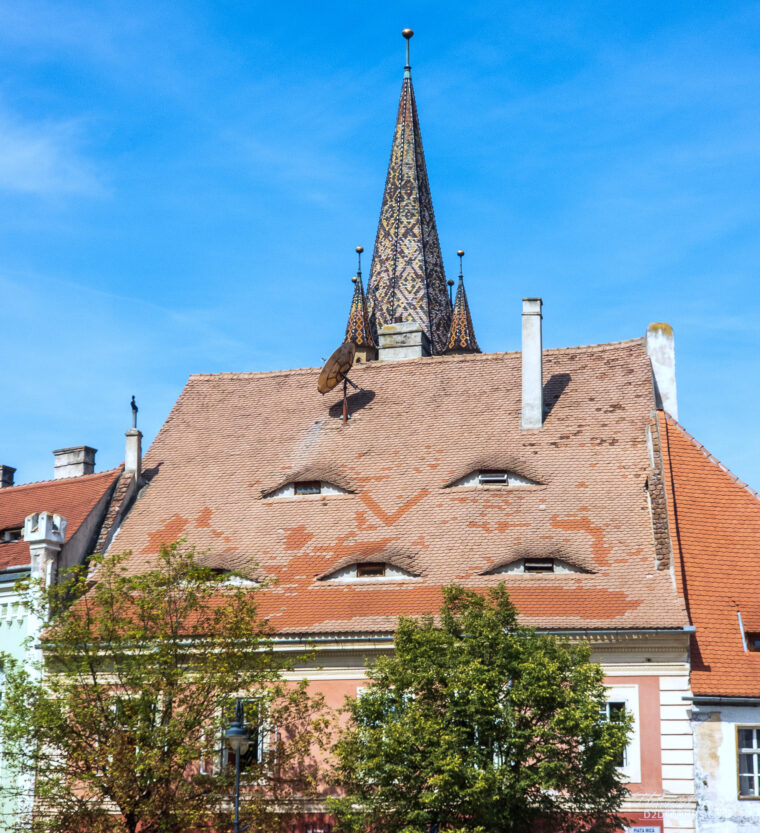
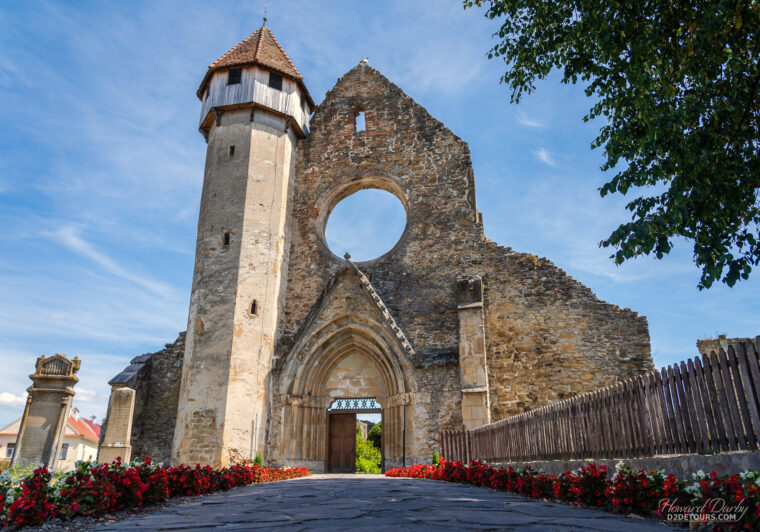
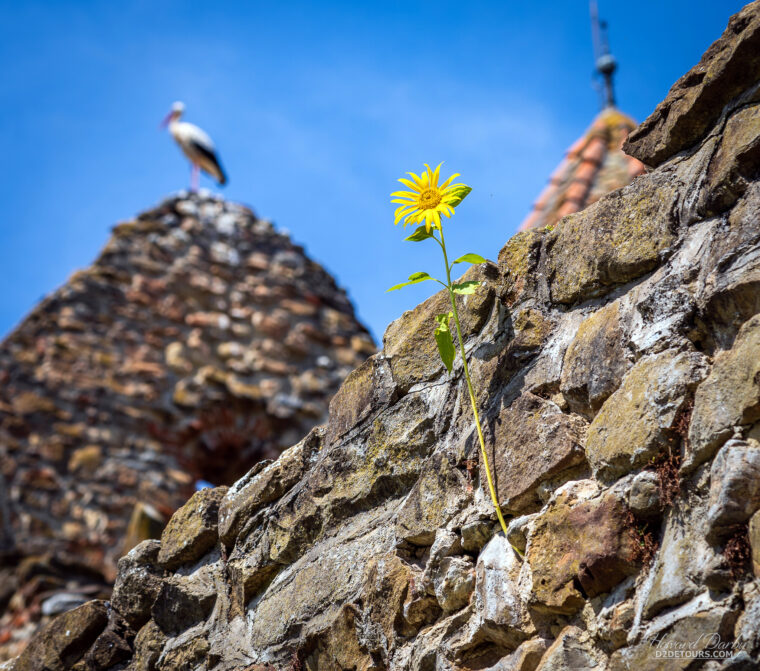
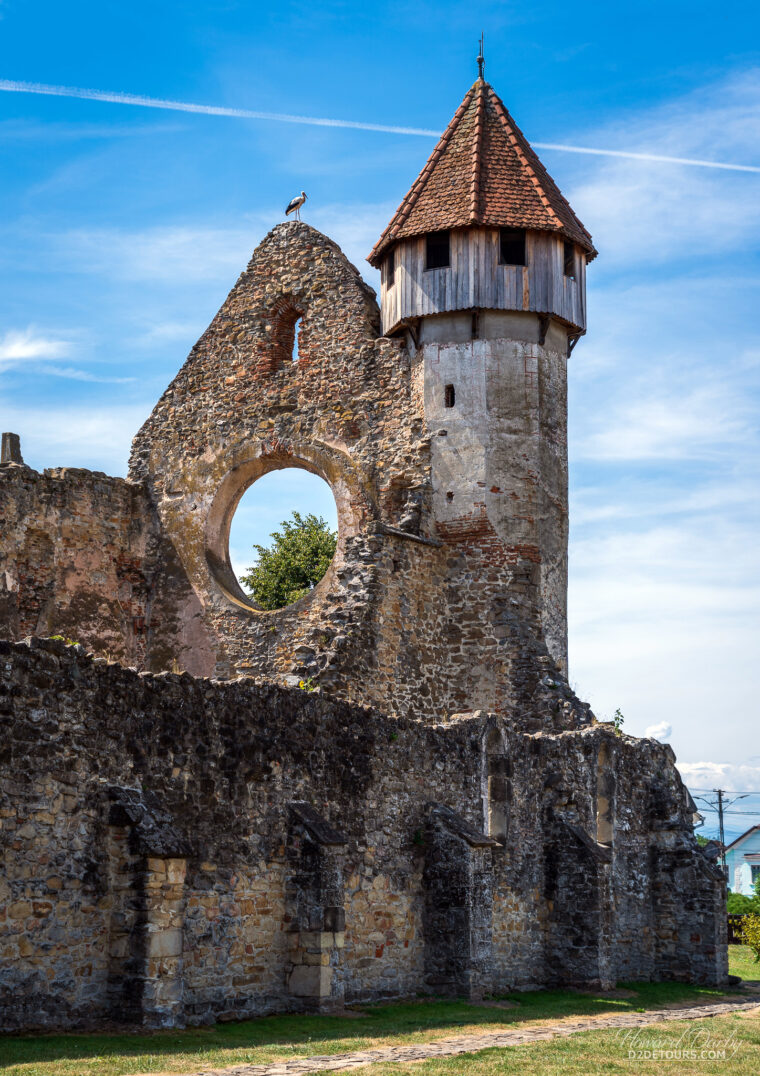
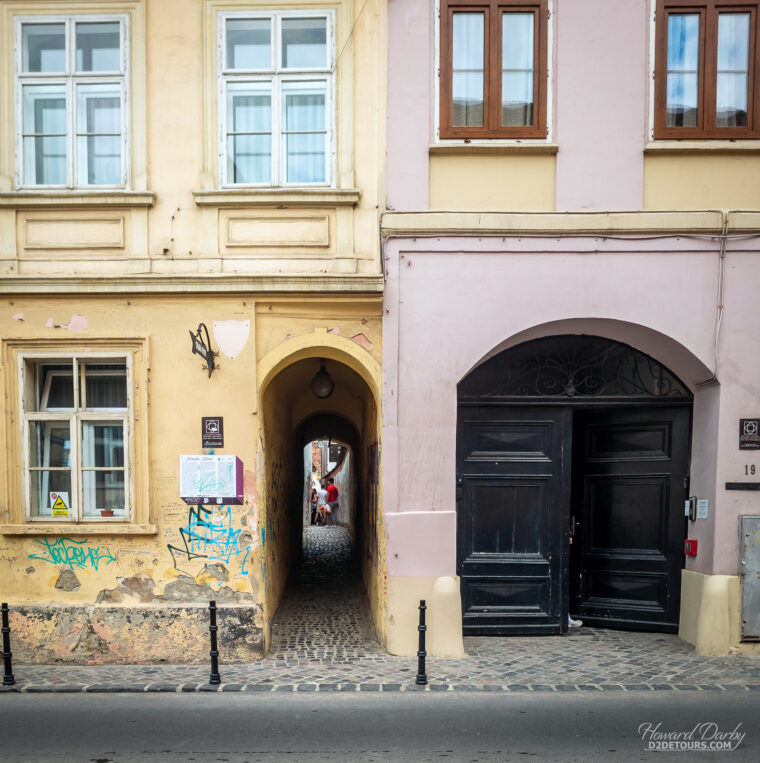

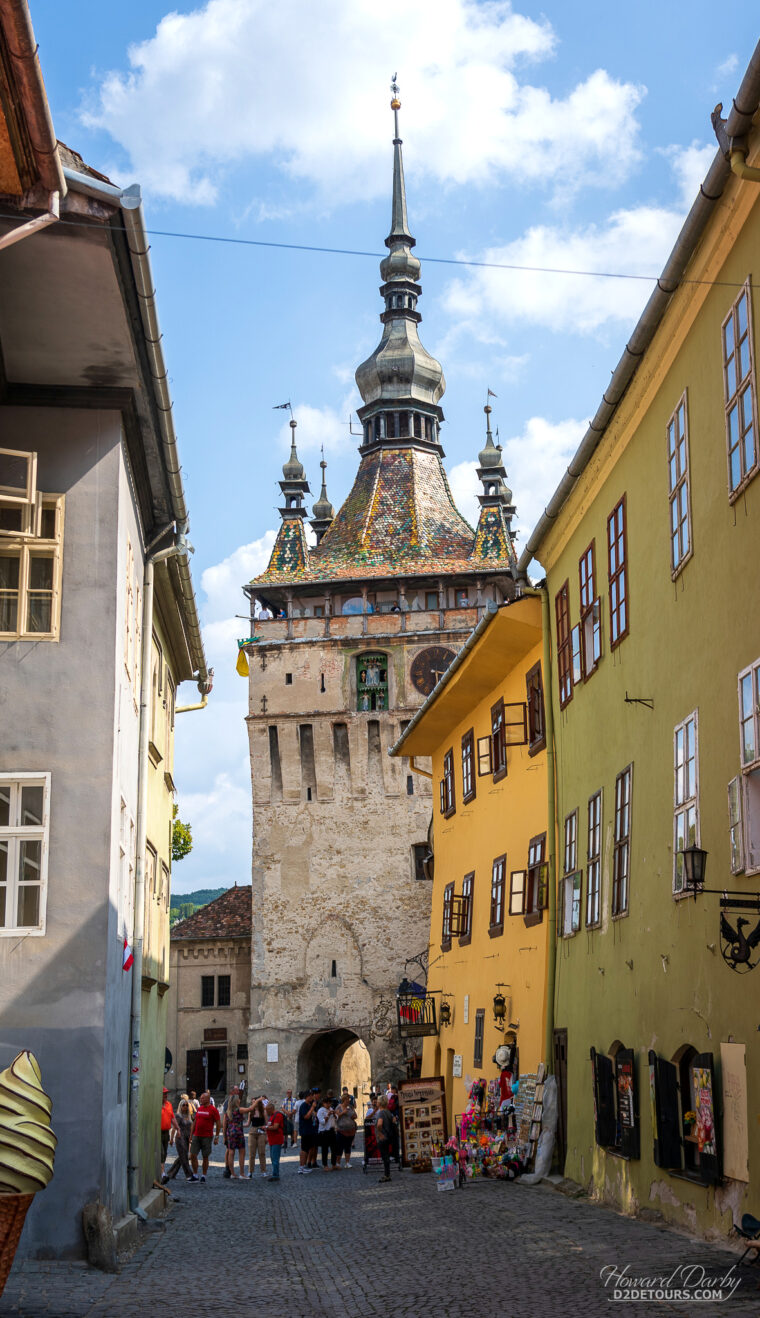
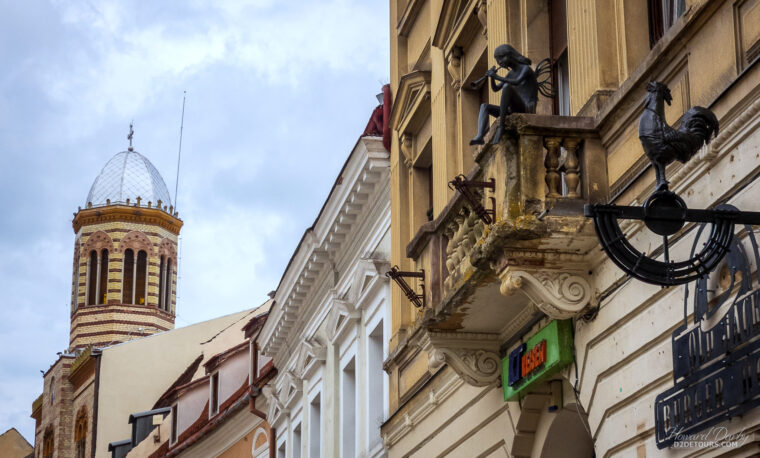
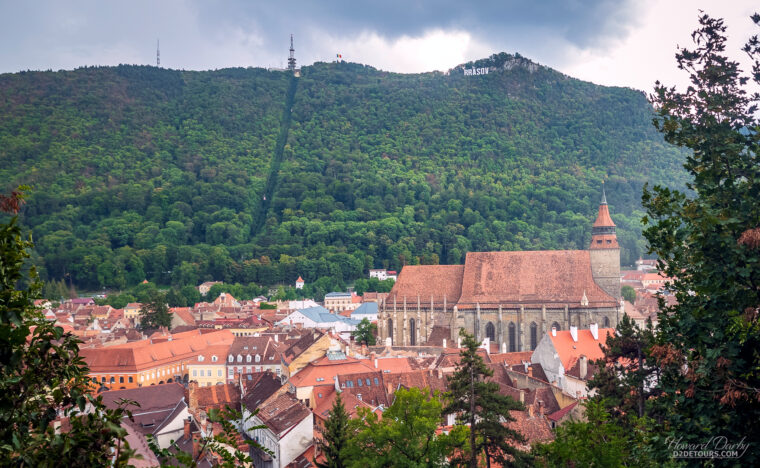

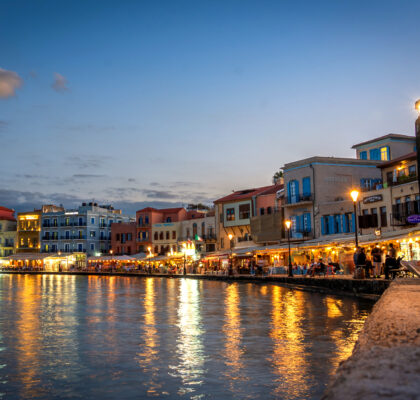
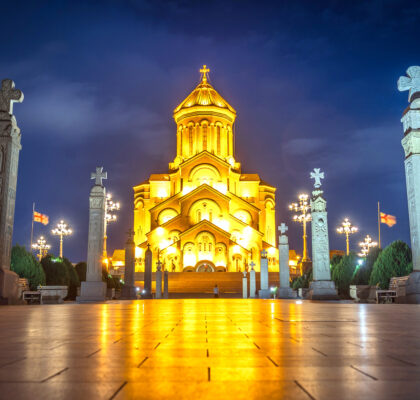
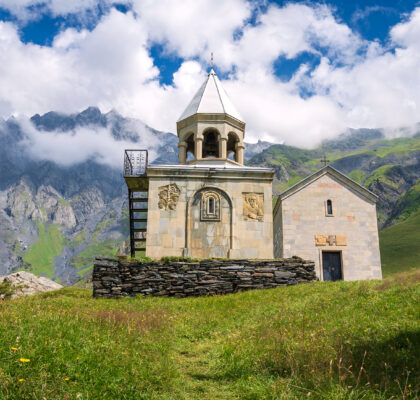
Oh my how wonderful that you have shared all this with us and loved all the details of foods, language and much more.
Loved the castles!
Pingback: Bucharest, Romania Summary – Costs, Activities and Tips – D2 Detours